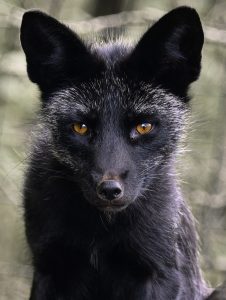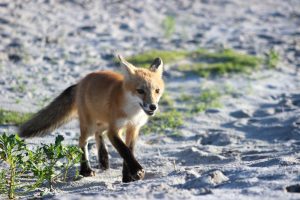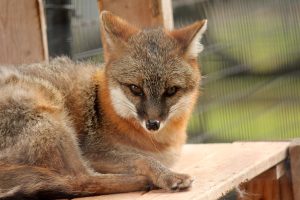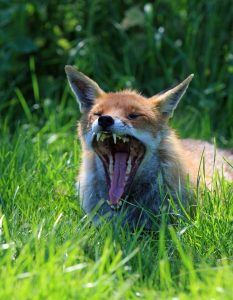
Maintaining nature’s balance
If you have ever attempted to control a pest problem in or around your home, you may have noticed that a multipronged approach is necessary. Removing food sources that may be attracting pests, sealing and closing cracks and crevices around your home to keep more of those pests from getting in, as well as figuring out how you will manage them are strategies that all work together to keep a pest problem at bay. The animals, insects, and plants that we label as pests have their own stories, purpose, and place in the natural world. These organisms often reproduce rapidly and abundantly, and their populations can quickly explode when the conditions are right- think animals like rodents and rabbits. Nature’s approach to maintaining the balance of different populations of wildlife is multipronged like our own.
In a healthy ecosystem, a diversity of predators creates a combined effect that helps to control numbers of animals like mice, which serve as hosts to parasitic ticks that carry harmful diseases. Mesopredators are predatory animals that occupy a sort of middle-ground on a traditional food chain or energy pyramid. It is important to conserve healthy, in-tact habitats and ecosystems so that they can support a diversity of predators at different levels. These often-overlooked predators include animals like foxes, raccoons, some snake species, and other animals that both consume prey and act as prey themselves for apex predators. Snakes often and rightfully receive our praise and recognition for helping control the population of rodents in neighborhoods and natural areas. However, they can’t do it all alone- foxes play an important role, too.
Florida’s foxes
In Florida, gray foxes are native, and red foxes have expanded their range into Florida, and can be found throughout the state, excluding the Florida Keys. These small canids, or animals in the dog family, are most active during the nighttime, but can be seen searching for food during daylight, dawn, and dusk hours. Both animals are also opportunistic omnivores, a characteristic they share with one of our other unsung heroes, the opossum. Opportunistic omnivores will forage or hunt for easily accessible food of a wide variety- including both meat and plant matter. This characteristic allows foxes and some mesopredators like raccoons to be highly adaptable, flexible, and even inhabit areas that are in close proximity to humans.
Foxes eat a considerable amount of smaller mammals such as rodents and rabbits, and additionally eat fruits, birds, carrion, and more. Human garbage and pet food may even be on the menu, so be sure to properly secure your garbage and keep pet food indoors. As mesopredators, in addition to the foods and animals they eat, when they are young, foxes serve as prey for larger predatory mammals like coyotes and bobcats, and birds of prey like owls (FWC, n.d.).
Red and gray fox differences

Red Fox (Vulpes vulpes)
- Bright copper-colored fur
- White-tipped tail
- Black fur on legs and backs/tips of ears
- 10-15 pounds, 2 feet in length excluding tail (FWC, n.d.)
- Found in more open habitat in Florida
Gray Fox (Urocyon cinereoargenteus)

- Heathered, coarse gray fur with a white and copper-colored underside and accents
- Black tipped tail
- Small, pointed face
- 7-13 pounds, 40 inches in length including tail (FWC, n.d.)
- Semi-retractable claws that aid in tree climbing
- Found in more wooded habitat in Florida
Coexisting with foxes
If you are the lucky owner of a flock of chickens, foxes may be an animal that you are not too fond of. Because red foxes prefer more open areas and fields, this puts them in closer proximity to human communities and their animals. Gray and red foxes often meet an untimely death due to human causes such as interactions with dogs, road strikes, and (intentional and accidental) trapping and lethal management (Gingerich, 2003).
Remember the important role that foxes play in our ecosystems. It is possible to show our gratitude for our fox species while also protecting our own interests. Discourage these opportunistic omnivores from finding food near your home with the following best practices:

- Properly secure all garbage in lidded, tamper resistant containers, and avoid putting trash out at night
- Do not leave pet food outdoors
- Properly secure chickens and other livestock in pens and coops that cannot be accessed from above or below (through digging)
- Never feed foxes- this is illegal in the state of Florida
- Remove debris and brush piles and secure structures so that they do not become a suitable home for foxes
- Control populations of rodents such as rats and mice in and around your home using effective exclusion techniques
- Hazing, which is the practice of safely discouraging an animal from utilizing an area and maintaining its fear of humans, may be effective. See this resource from the Florida Fish and Wildlife Conservation Commission for more information
Learn More

See you next week for another Story of Gratitude!
Resources
- Florida Fish and Wildlife conservation Commission. (n.d.). Gray Fox. myfwc.com/wildlifehabitats/profiles/mammals/land/gray-fox/
- Florida Fish and Wildlife conservation Commission. (n.d.). Red Fox. myfwc.com/wildlifehabitats/profiles/mammals/land/red-fox/
- Gingerich, J. L. (2003). Florida’s Fabulous Mammals (9th ed., L. Rabinowitz & W. Williams, Ed.). World Publications
 4
4
